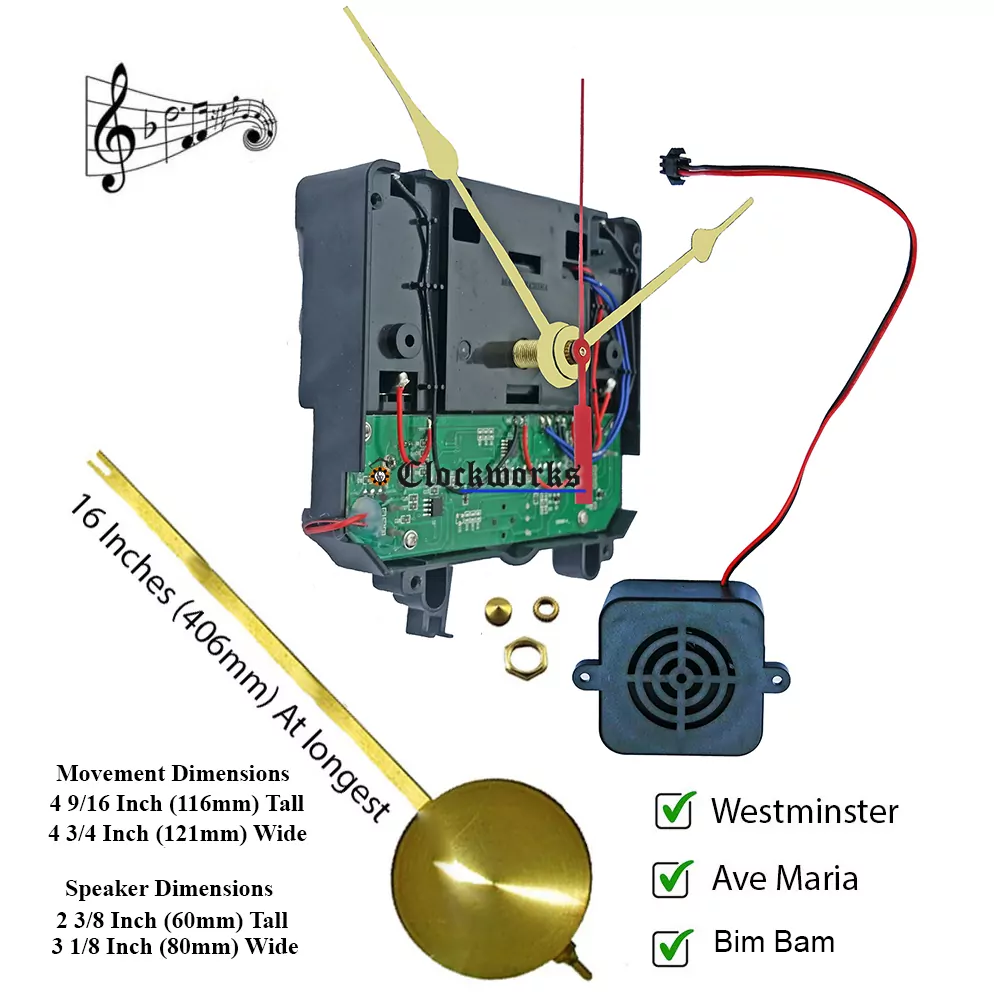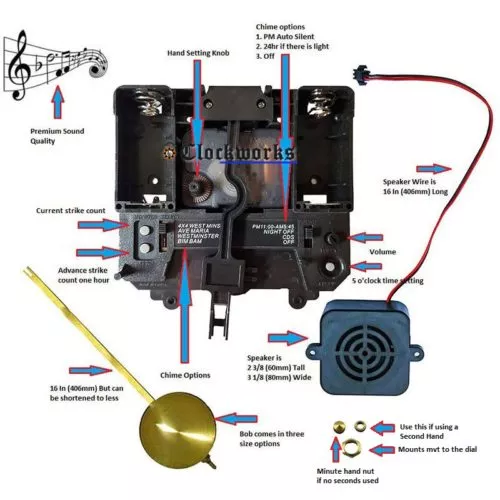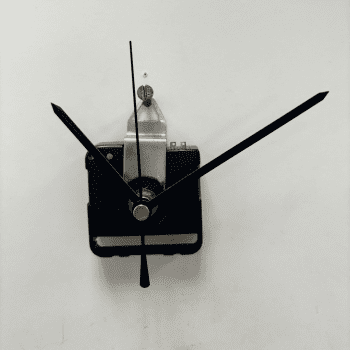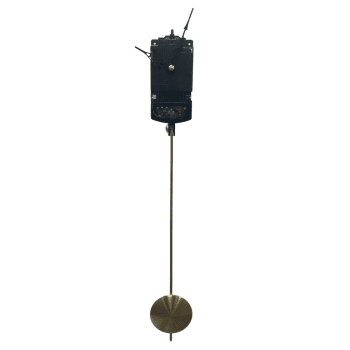Description
Removing a Bad Unit
The first step to replacing a quartz movement is accessing the movement from both the back and the front where the hands are.
1. Getting to the dial
There are various case designs and styles, and accessing the dial (face) of the clock can vary. Sometimes it is easy, while other times, the dial has a glass covering it. You may need to figure out how the clock case was put together to take it apart enough to reach the dial.
2. Removing the hands
If there is a second hand, grab it with your thumbnails and pull it straight off. The minute hand can be held down either by a nut or friction. For the friction fit, just pull it off. For the nut style, hold the minute hand still while turning the nut to the left with needle-nose pliers to loosen it.
3. Removing the hex nut
Use needle-nose pliers to turn the hex nut to the left, so you can unscrew it with your fingers. Once the hex nut is off, the quartz clock movement will fall out of the back of the dial (face).
Quartz Movement Assembly
- Place hanger on post (optional)
- Place black washer on post (optional)
- Put the post through the clock dial face
- Slide the brass washer onto the post sticking out of the clock dial face
- Tighten the hex nut to hold the movement to the back of the clock face using needle-nose pliers if needed. Do not overtighten.
- Push the hour hand onto the post. This is a friction fit and should be pushed down without touching the clock face.
- Put the minute hand on the post
- If using a second hand, screw the small donut on top of the minute hand and then push the second hand onto the pin in the center of the unit. If not, screw the cap nut on. You are done.
- WESTMINSTER MOVEMENT
- 1 YEAR GUARANTEE
- 2 C-SIZE BATTERIES INCL.







Reviews
There are no reviews yet.